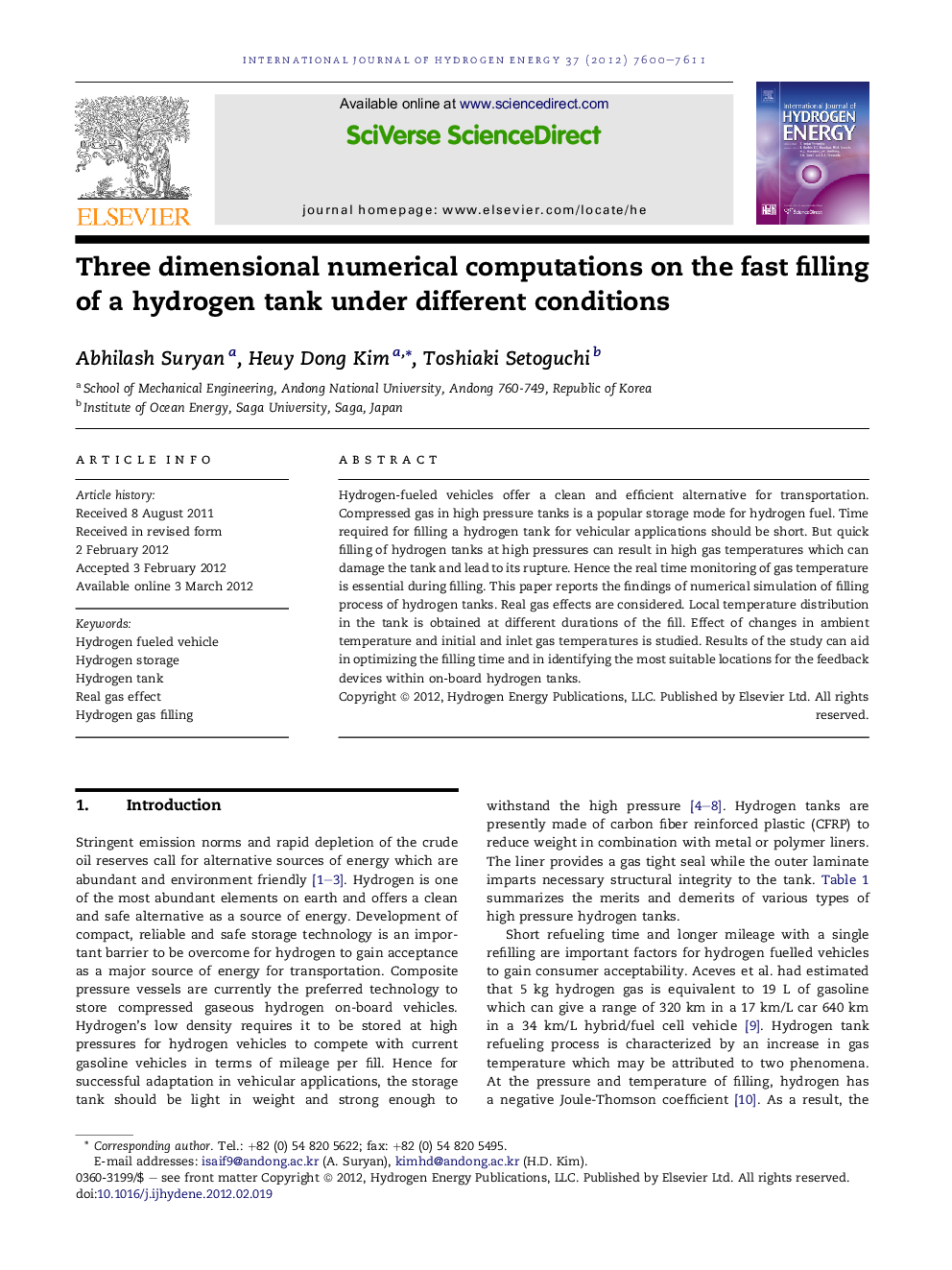| Article ID | Journal | Published Year | Pages | File Type |
|---|---|---|---|---|
| 1278563 | International Journal of Hydrogen Energy | 2012 | 12 Pages |
Hydrogen-fueled vehicles offer a clean and efficient alternative for transportation. Compressed gas in high pressure tanks is a popular storage mode for hydrogen fuel. Time required for filling a hydrogen tank for vehicular applications should be short. But quick filling of hydrogen tanks at high pressures can result in high gas temperatures which can damage the tank and lead to its rupture. Hence the real time monitoring of gas temperature is essential during filling. This paper reports the findings of numerical simulation of filling process of hydrogen tanks. Real gas effects are considered. Local temperature distribution in the tank is obtained at different durations of the fill. Effect of changes in ambient temperature and initial and inlet gas temperatures is studied. Results of the study can aid in optimizing the filling time and in identifying the most suitable locations for the feedback devices within on-board hydrogen tanks.
► A 3-D numerical model to simulate the filling of a hydrogen tank is presented. ► Model has accurately predicted gas temperature rise within 1–2.5 K. ► Effects of inlet and initial temperatures on temperature rise considered. ► Model will help optimize the hydrogen filling process. ► Help identify location of thermocouples in experiments and vehicle tanks.
